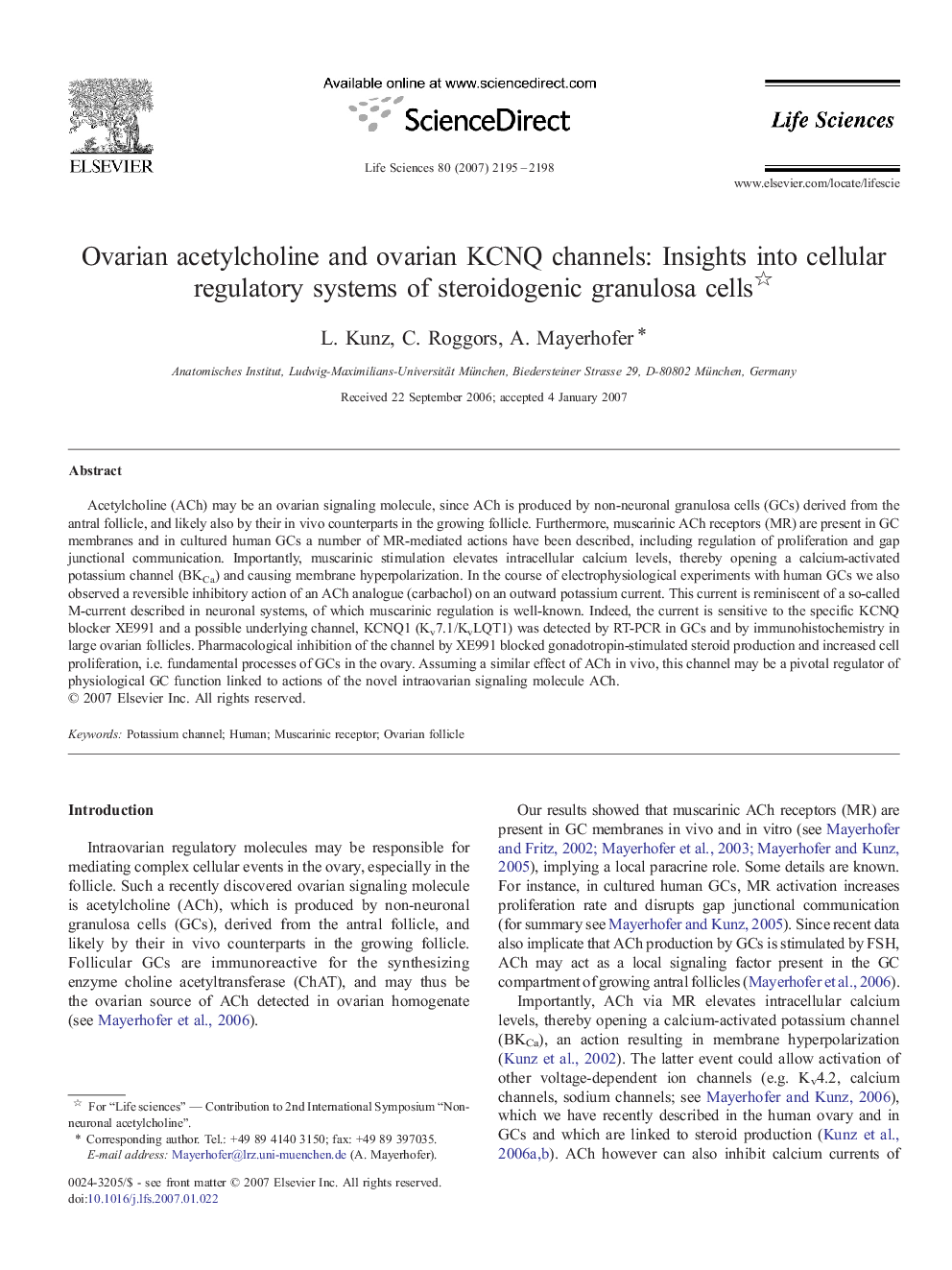| Article ID | Journal | Published Year | Pages | File Type |
|---|---|---|---|---|
| 2553550 | Life Sciences | 2007 | 4 Pages |
Acetylcholine (ACh) may be an ovarian signaling molecule, since ACh is produced by non-neuronal granulosa cells (GCs) derived from the antral follicle, and likely also by their in vivo counterparts in the growing follicle. Furthermore, muscarinic ACh receptors (MR) are present in GC membranes and in cultured human GCs a number of MR-mediated actions have been described, including regulation of proliferation and gap junctional communication. Importantly, muscarinic stimulation elevates intracellular calcium levels, thereby opening a calcium-activated potassium channel (BKCa) and causing membrane hyperpolarization. In the course of electrophysiological experiments with human GCs we also observed a reversible inhibitory action of an ACh analogue (carbachol) on an outward potassium current. This current is reminiscent of a so-called M-current described in neuronal systems, of which muscarinic regulation is well-known. Indeed, the current is sensitive to the specific KCNQ blocker XE991 and a possible underlying channel, KCNQ1 (Kv7.1/KvLQT1) was detected by RT-PCR in GCs and by immunohistochemistry in large ovarian follicles. Pharmacological inhibition of the channel by XE991 blocked gonadotropin-stimulated steroid production and increased cell proliferation, i.e. fundamental processes of GCs in the ovary. Assuming a similar effect of ACh in vivo, this channel may be a pivotal regulator of physiological GC function linked to actions of the novel intraovarian signaling molecule ACh.
